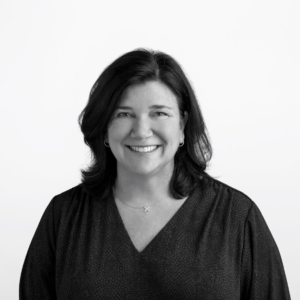Is it time for an attitude adjustment?
The White House Conference on Aging’s (WHCOA’s) fourth regional event, today in Cleveland, provided another opportunity for government officials, advocates and others to gather to discuss topics identified as themes for the conference: elder justice, long-term services and supports (LTSS), healthy aging and retirement security. An additional, related theme running throughout speakers’ talks on April 27, however, was the need to redefine the way members of our society view older adults and the process of aging.
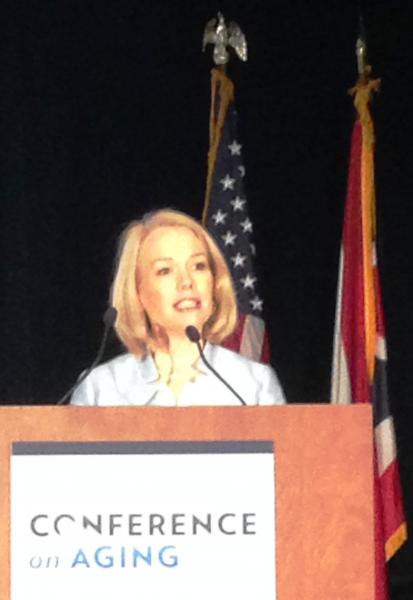 “I’m old enough for my AARP card, and I’m proud of it,” WHCOA Executive Director Nora Super, left, told the more than 200 in-person attendees at Cleveland’s Global Center for Health Innovation and others watching online. Part of the message of conference events, she added, is to encourage aging adults—and who isn't aging?—to embrace their age; in doing so, others will see that aging isn’t necessarily a negative experience.
“I’m old enough for my AARP card, and I’m proud of it,” WHCOA Executive Director Nora Super, left, told the more than 200 in-person attendees at Cleveland’s Global Center for Health Innovation and others watching online. Part of the message of conference events, she added, is to encourage aging adults—and who isn't aging?—to embrace their age; in doing so, others will see that aging isn’t necessarily a negative experience.
Super said that after talking with people at previous conference events, she concluded that “older Americans are calling for a shift in how we think about aging” and that society should focus on the opportunities for older adults, not on their limitations. And baby boomers play an important role in that mindset change as the U.S. population of adults aged 65 or more years nearly doubles to 71.5 million people by 2030, up from 37 million in 2006, according to the Federal Interagency Forum on Age-Related Statistics.
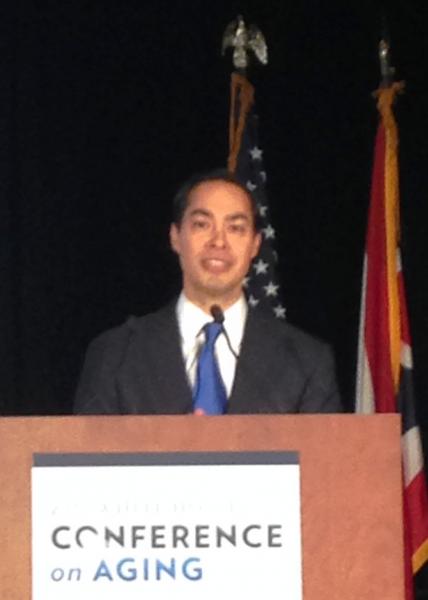 Retirement is no longer looked at as an ending but “as a new and exciting beginning to the next stage of life,” U.S. Department of Housing and Urban Development Secretary Julian Castro, JD, (who said he is 9.5 years away from AARP eligibility) said in remarks preceding Super’s comments. This attitude can be reflected in the country’s policies affecting older adults, including those related to affordable housing, Castro, right, said. “It’s time to develop a 21st-century vision that values older Americans as assets to be cherished and welcomed, not problems to dismiss,” he added.
Retirement is no longer looked at as an ending but “as a new and exciting beginning to the next stage of life,” U.S. Department of Housing and Urban Development Secretary Julian Castro, JD, (who said he is 9.5 years away from AARP eligibility) said in remarks preceding Super’s comments. This attitude can be reflected in the country’s policies affecting older adults, including those related to affordable housing, Castro, right, said. “It’s time to develop a 21st-century vision that values older Americans as assets to be cherished and welcomed, not problems to dismiss,” he added.
Bonnie Kantor-Burman, ScD, director of the Ohio Department of Aging (on the right in the photo below), told meeting attendees that her agency refers to senior citizens as elders to drive home the message that “elders continue to grow, continue to thrive and continue to contribute to the community.” She was part of a panel discussion on healthy aging and LTSS.
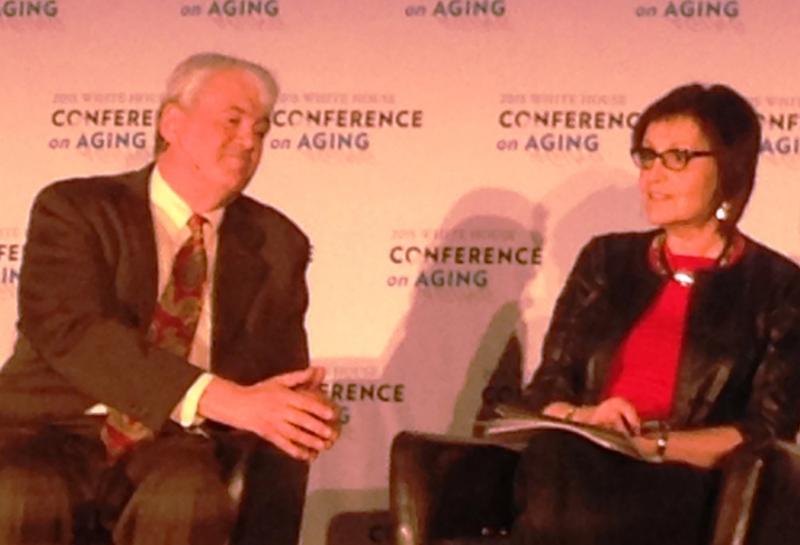 “If we are not able to see those in our community as elders,” she continued, “we will have missed an incredible opportunity.” Even for those whose health is declining, Kantor-Burman said, “there is always, always something we can do” to help people age gracefully and thrive.
“If we are not able to see those in our community as elders,” she continued, “we will have missed an incredible opportunity.” Even for those whose health is declining, Kantor-Burman said, “there is always, always something we can do” to help people age gracefully and thrive.
Peter Whitehouse, MD, PhD, sitting next to Kantor-Burman in the aforementioned photo, noted in the same panel discussion that AARP’s recently introduced Livability Index and other programs “refer to life and not just aging.” “Aging starts at birth [and] is a lifelong activity,” noted the professor of neurology and other specialties at Case Western Reserve University. The new Livability Index provides a measure of how well communities are meeting the needs of aging residents.
I’d like to hear from you. Do you agree that an attitude adjustment is in order when it comes to the aging process and older adults? If so, what additional ideas can you share?
Additional conference coverage:
Home health wages are conference topic
Social Security vital, speakers say
Related content:
4 steps to protect residents from financial fraud
Access all blogs by this author.
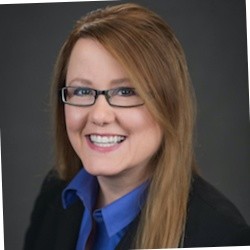
Lois A. Bowers was senior editor of I Advance Senior Care / Long-Term Living from 2013-2015.
Related Articles
Topics: Advocacy , Executive Leadership




